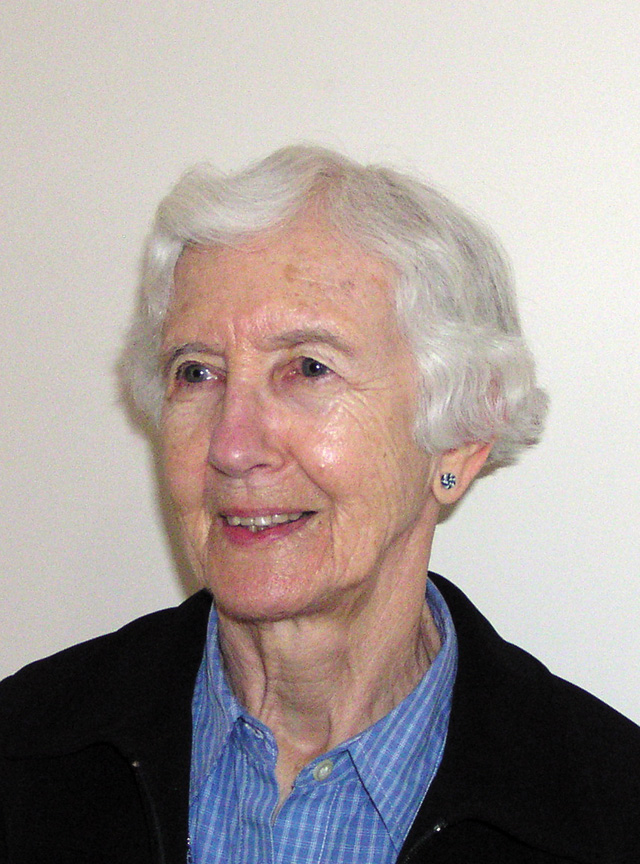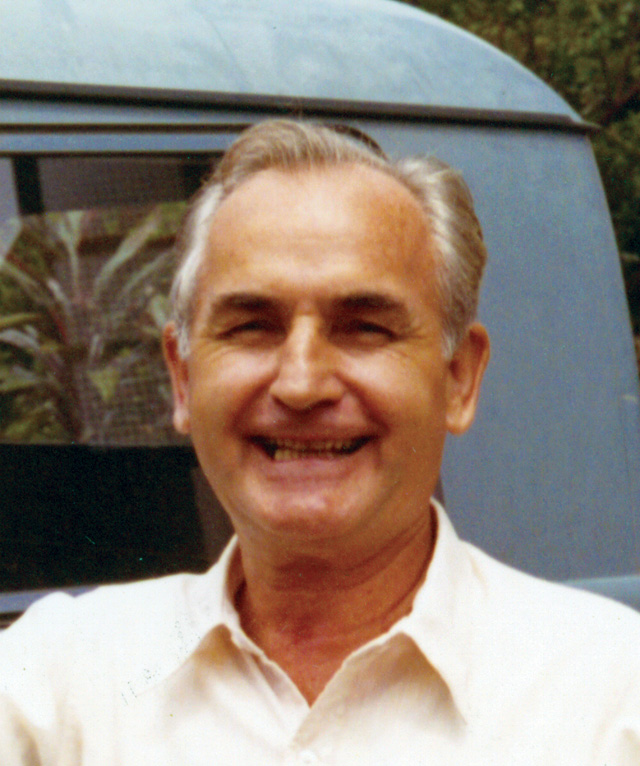PHILIPPINES
Scarboro Missions
By Sr. Myra Trainor, O.L.M.
January/February 2013
Return to Table of Contents
Print Article
In 1975, during the turbulent years of martial law, I arrived in the town of Hinunangan on the beautiful Pacific coast of Southern Leyte in East-Central Philippines. At that time, this area had government-operated medical clinics, but no hospital and few high schools. Roads were impassable during heavy rains when the swollen rivers would wash away the wooden bridges. There were only a couple of Filipino clergy for the whole region. It was here that Scarboro Missions had been invited to come and work in 1955, to an area that eventually came to be known by local people as “Scarboro Country.”
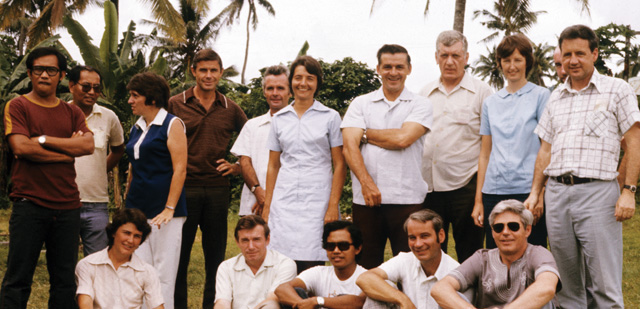 Delegates from Scarboro’s Japan mission, as well as the Society’s General Council, join the team in the Philippines at their central-house in Cebu for a regional meeting. Present during a social time are Filipino friends and members of Our Lady Missionaries working in the Philippines. 1971.
Delegates from Scarboro’s Japan mission, as well as the Society’s General Council, join the team in the Philippines at their central-house in Cebu for a regional meeting. Present during a social time are Filipino friends and members of Our Lady Missionaries working in the Philippines. 1971.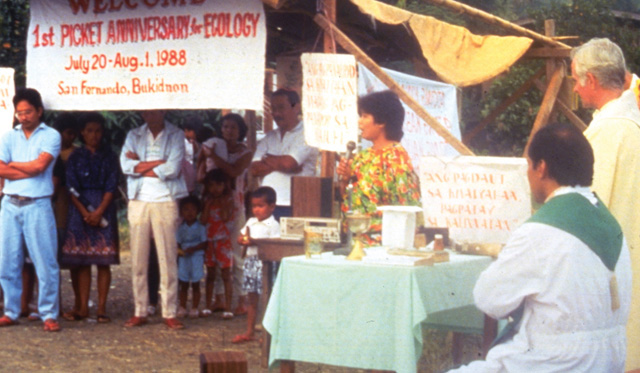 Fr. Pat Kelly (right) celebrates mass with the people on the first anniversary of their nonviolent picket to save the forests of Bukidnon, Philippines. Both he and Fr. Charlie Gervais stood in solidarity with local communities who succeeded in stopping logging companies from clear-cutting the trees in their watershed in the mountains.
Fr. Pat Kelly (right) celebrates mass with the people on the first anniversary of their nonviolent picket to save the forests of Bukidnon, Philippines. Both he and Fr. Charlie Gervais stood in solidarity with local communities who succeeded in stopping logging companies from clear-cutting the trees in their watershed in the mountains.
When I arrived, Our Lady’s Missionaries were already living in a home that the Scarboro priests had graciously given us for our convent. (They had moved into a larger, less comfortable residence for their rectory.)
The people of Hinunangan were religious and accepted their poverty and suffering as the will of God. The Scarboro priests not only put efforts into sacramental work, but they also worked with the people to build schools and a hospital. They established credit unions and other projects to help the people improve their lives. By their simple lifestyle, their bare rectories, and their prioritizing of the poor, the missionaries gave a great witness to Gospel values. I could see that the materially-deprived people felt very much at home with the priests, as they knew that the foreign priests were there exclusively for them.
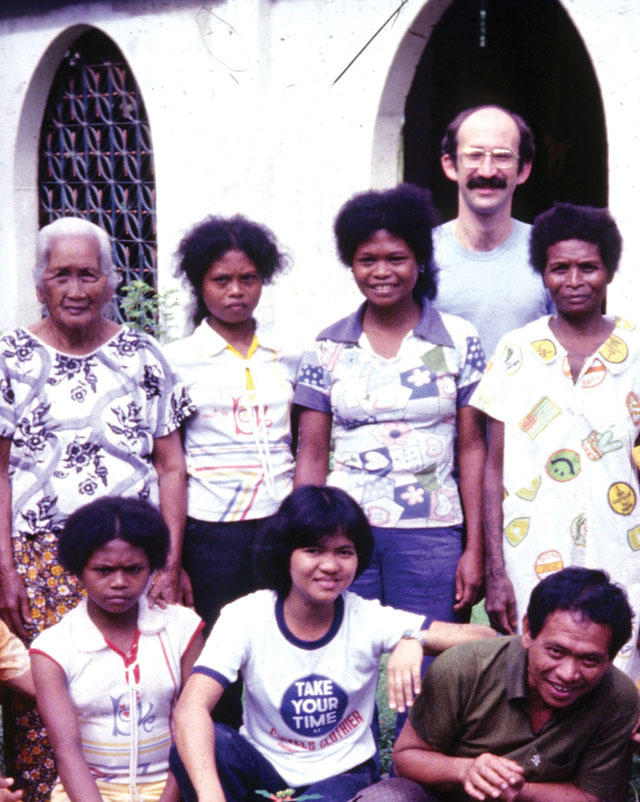 Lay missioner Gary Saulnier (back row above) studied herbal medicine with rural mananambal (practitioners of traditional medicine) in the Philippines and compiled a book on Visayan herbal medicine in 1981 that is still widely used by the community-based health program of the Visayan-speaking regions of the Philippines.
Lay missioner Gary Saulnier (back row above) studied herbal medicine with rural mananambal (practitioners of traditional medicine) in the Philippines and compiled a book on Visayan herbal medicine in 1981 that is still widely used by the community-based health program of the Visayan-speaking regions of the Philippines.
It was a scary time to live in Southern Leyte during the Marcos regime. Many people were being “salvaged,” that is, abducted and never seen again. These people were considered rebels for not supporting the government. At a risk to themselves, the Scarboro priests supported and stood by and with the people and their families.
I also remember the Scarboro community responding with great generosity after a strong typhoon destroyed homes, crops, fishing boats and all means of livelihood for the struggling people.
Our Lady’s Missionaries worked in various ministries in the parishes along the coast and always felt the support and encouragement of the Scarboro missioners. Our Sisters occasionally went by boat to Cebu City for shopping and for medical reasons. Scarboro’s central-house in Cebu was coordinated by Fr. Armand Clement, a prince of a man who gave gracious and generous hospitality to all and we were some of the lucky recipients.
As the Diocese of Maasin in Southern Leyte began to ordain more Filipino clergy, the Scarboro missioners answered the call to serve in another part of the Philippines, but I believe their spirit will live on for many years in the memories and hearts of the people of Southern Leyte.
Return to Table of Contents
Print Article
